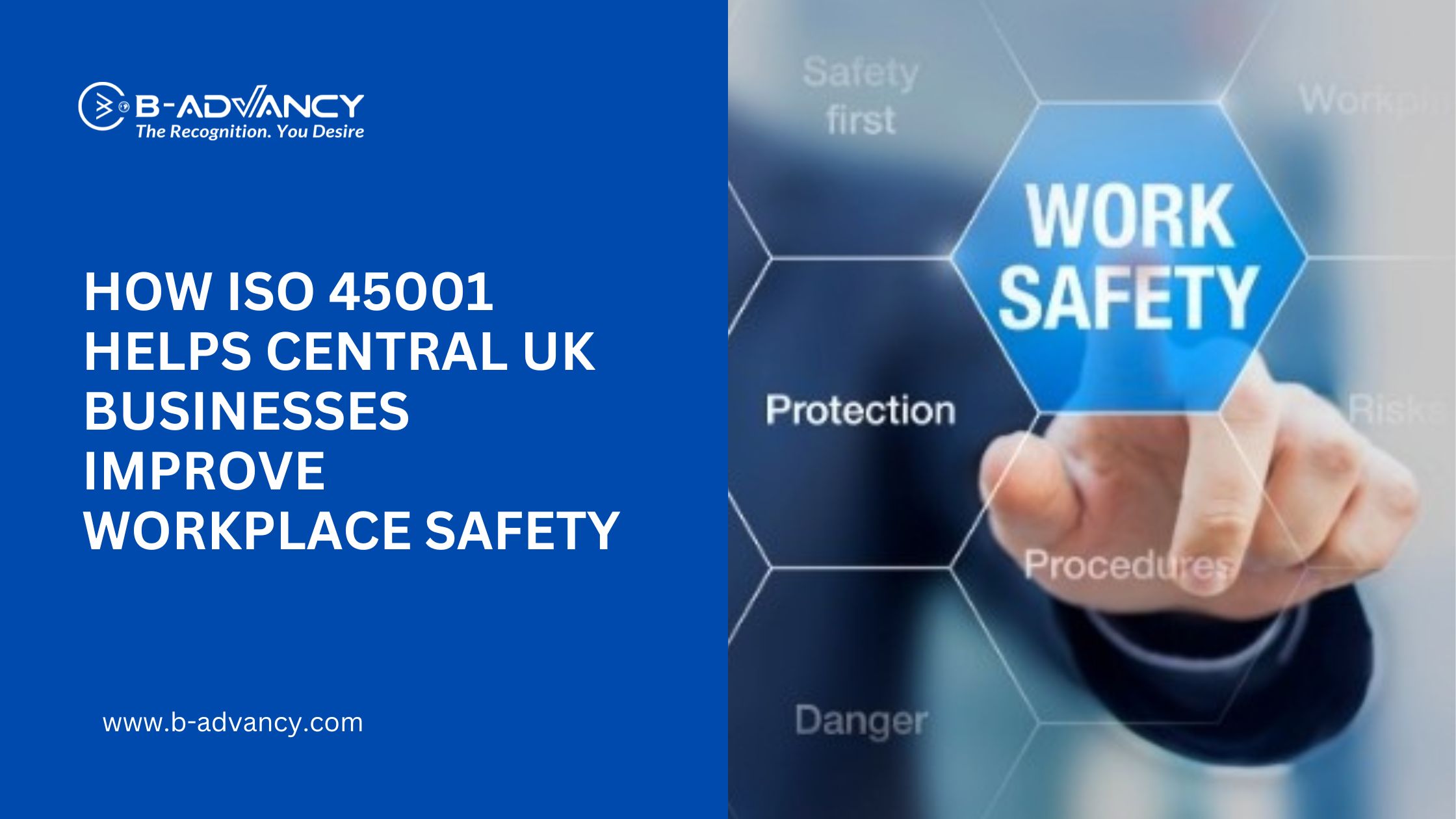
Workplace safety is a top priority for businesses across Central England. With stringent health and safety regulations, companies must ensure compliance while creating a secure environment for employees. ISO 45001, the internationally recognised standard for occupational health and safety (OHS), provides a structured framework to help businesses prevent workplace hazards, reduce risks, and improve overall safety culture.
ISO 45001 is the global standard for occupational health and safety management systems (OHSMS). It replaces OHSAS 18001 and helps organisations proactively improve their safety measures. The key principles of ISO 45001 include:
Hazard Identification & Risk Assessment – Preventing workplace injuries and illnesses by recognising potential hazards before they cause harm.
Worker Participation – Involving employees in safety decisions and encouraging a proactive approach to workplace safety.
Continuous Improvement – Regular monitoring, evaluation, and updates to safety protocols to maintain a safe working environment.
The UK has strict workplace safety regulations, primarily governed by the Health and Safety at Work Act 1974. ISO 45001 helps businesses align with legal requirements, reducing the risk of fines, legal issues, and reputational damage. Compliance also ensures that businesses maintain a safe and productive working environment.
A well-implemented ISO 45001 system enables businesses to identify potential hazards before they lead to workplace incidents. This proactive approach results in:
Fewer accidents and injuries
Lower absenteeism due to work-related illnesses
Increased overall productivity and efficiency
When employees see their safety being prioritised, job satisfaction and confidence in their employer increase. A secure work environment leads to:
Higher employee engagement
Better performance
Lower staff turnover rates
By reducing the number of workplace incidents, businesses can also reduce their insurance claims. This leads to lower insurance premiums, which can result in significant cost savings for organisations over time.
ISO 45001 certification is a mark of a company’s commitment to workplace safety. This enhances credibility and trust among clients, partners, and stakeholders. Many organisations prefer working with ISO-certified businesses, as it demonstrates compliance with international safety standards.
Before implementing ISO 45001, businesses should assess their current health and safety measures. Identifying gaps in compliance helps organisations address potential risks and create an action plan for improvement.
A structured safety management system should be developed, incorporating:
Workplace safety policies
Risk assessment procedures
Emergency response plans
Compliance documentation
Employee involvement is crucial for the success of ISO 45001. Businesses should encourage worker participation through:
Safety training programs
Open communication channels for reporting hazards
Regular meetings to discuss safety improvements
Safety measures should be regularly reviewed and updated based on audits and employee feedback. Continuous improvement ensures the system remains effective and aligned with evolving safety standards.
To become ISO 45001 certified, businesses must undergo an assessment by an accredited UK certification body. This process includes:
A formal evaluation of the implemented safety management system
Verification of compliance with ISO 45001 requirements
Issuance of certification upon successful completion
ISO 45001 is a game-changer for workplace safety in Central UK businesses. By implementing this standard, organisations can reduce risks, improve employee well-being, and enhance business reputation. Investing in ISO 45001 not only ensures legal compliance but also fosters a proactive safety culture, making businesses more resilient and efficient. In the long run, adopting ISO 45001 leads to a safer, more productive workplace, benefitting employees, employers, and stakeholders alike.